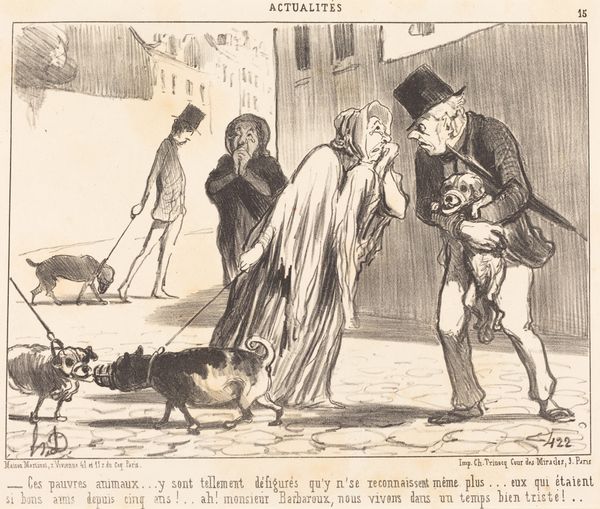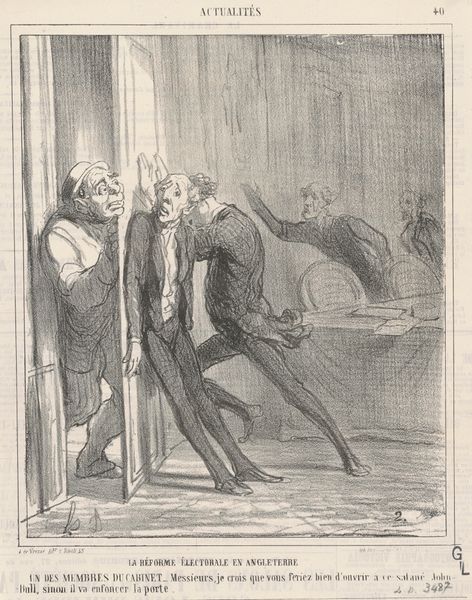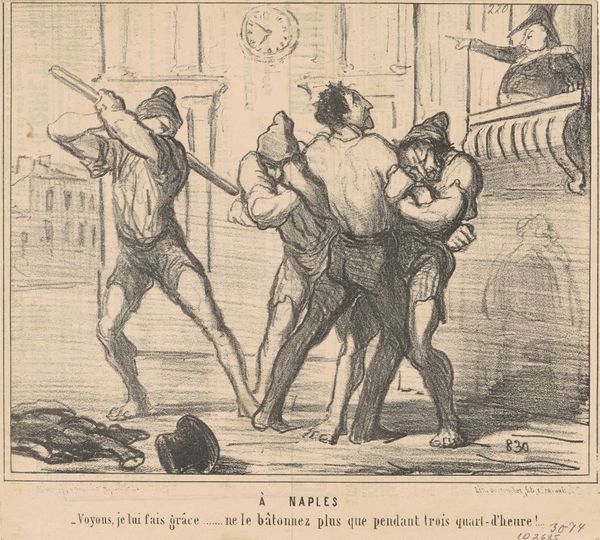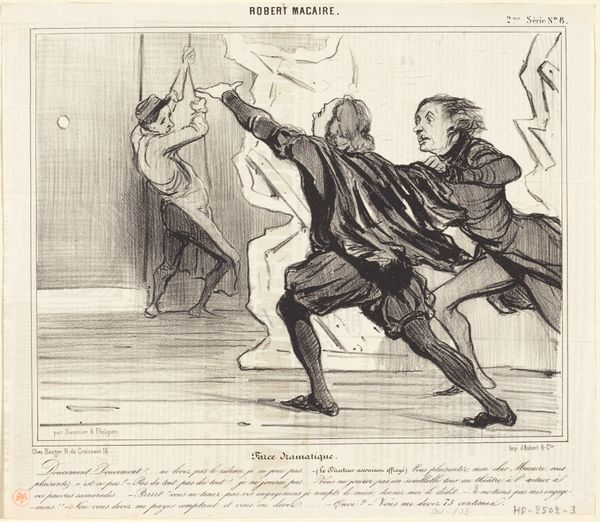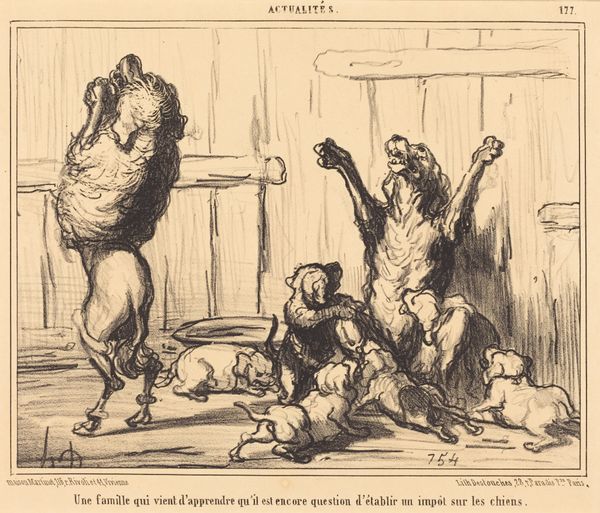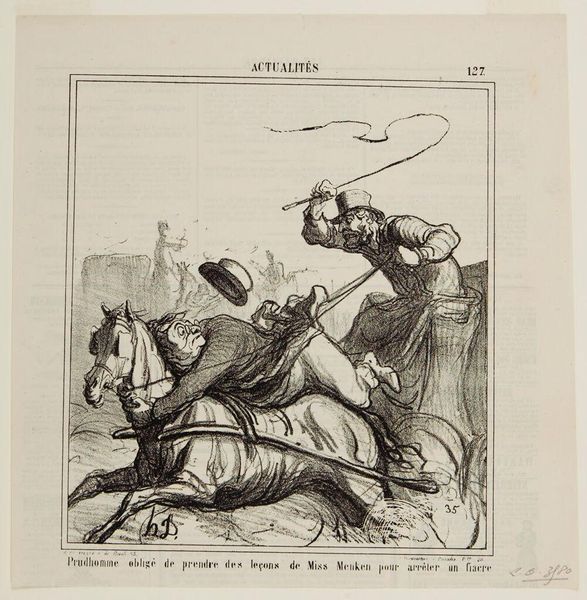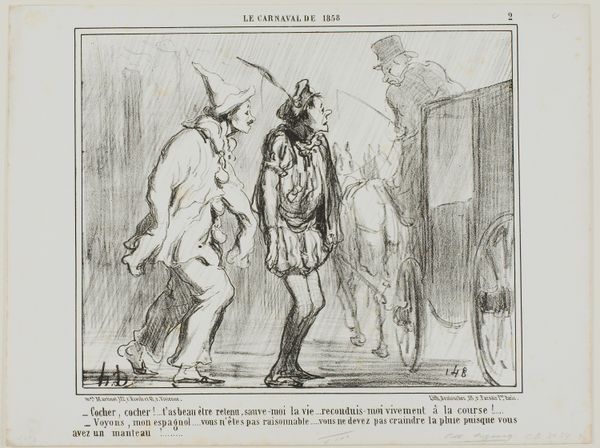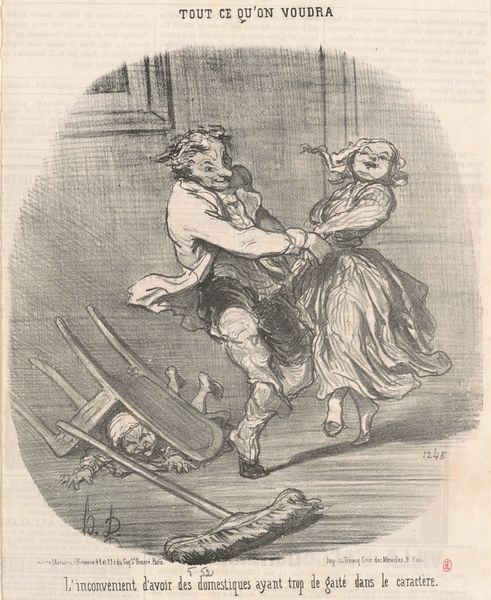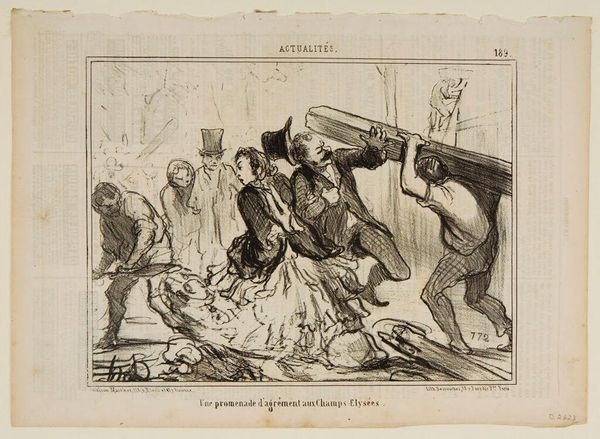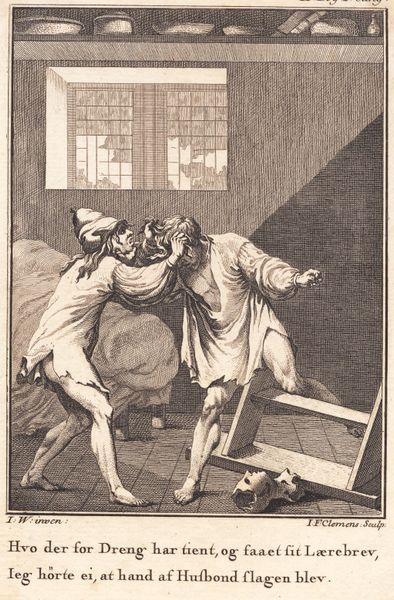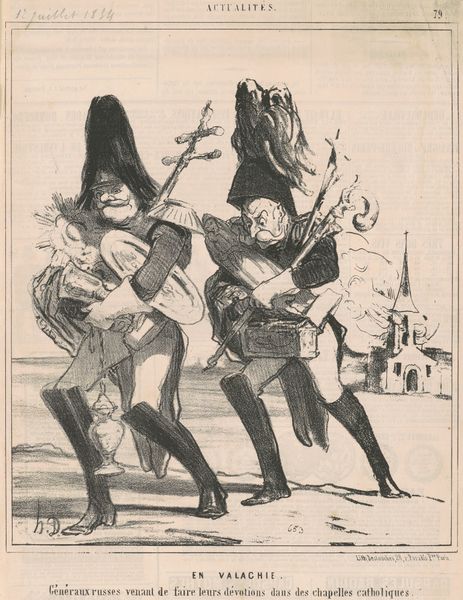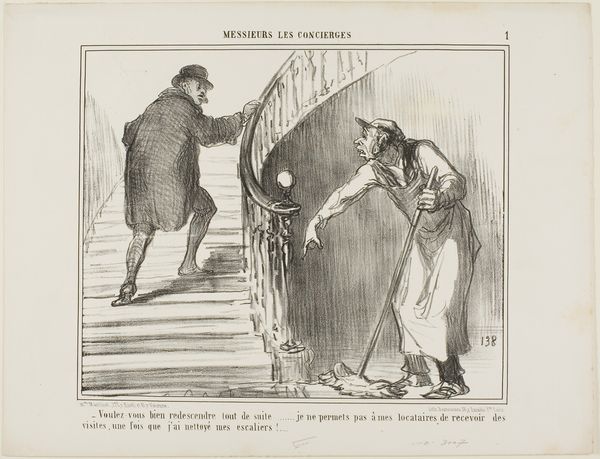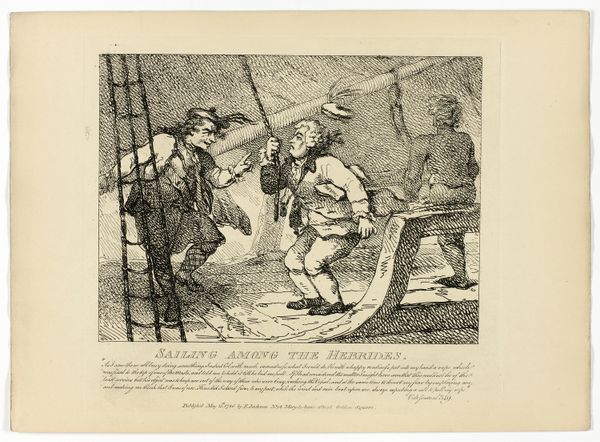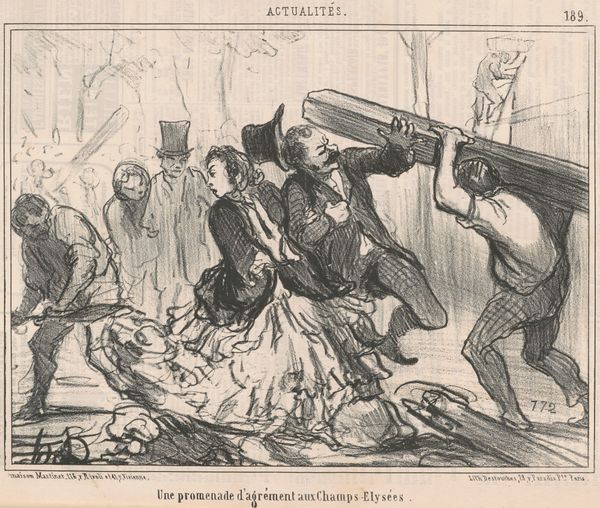
Copyright: National Gallery of Art: CC0 1.0
Curator: Looking at "Au Jardin des Plantes," an 1859 lithograph by Honoré Daumier, I'm struck by its theatrical drama, even just on first glance. It’s got this immediate feeling of absurdity, almost like a comedic opera frozen mid-scene. Editor: Exactly. The bars immediately force a grid-like composition, punctuated by these frantic gestures on one side and a very calm, towering figure on the other. The cross-hatching in the shadows deepens the contrast, emphasizing the performance element. Curator: And what a performance! You see Daumier doing what he does best, taking everyday life – a visit to the Jardin des Plantes, in this case – and skewering it with his satirical wit. He's like a fly on the wall with an inkwell. The man reacting looks almost like a caricature of royalty! Editor: Yes, the figure's outrage seems completely disproportional to the situation, which amplifies Daumier's commentary on the absurdity of societal ego. It feels quite staged, the dramatic reaction set against the very clear lines of the bars of the enclosure holding an actual, physical beast. Semiotically, you see that divide played out in multiple registers. Curator: True. He seems to be commenting on how pompous authority is continually mocked and humiliated by an ever chaotic modernity, symbolized, of course, by a cheeky elephant. What tickles me most is how current it all feels despite being over 150 years old. A quick-witted commentary rendered by the magic of lithography; such fluidity achieved with stone! Editor: It’s an important piece because it illustrates Daumier’s incisive social critique combined with his masterful handling of form. Curator: It’s Daumier being Daumier—eternally relevant, holding a mirror up to our follies and making us laugh at ourselves a little bit. Editor: An act of aesthetic reflection in a complex urban landscape.
Comments
No comments
Be the first to comment and join the conversation on the ultimate creative platform.
